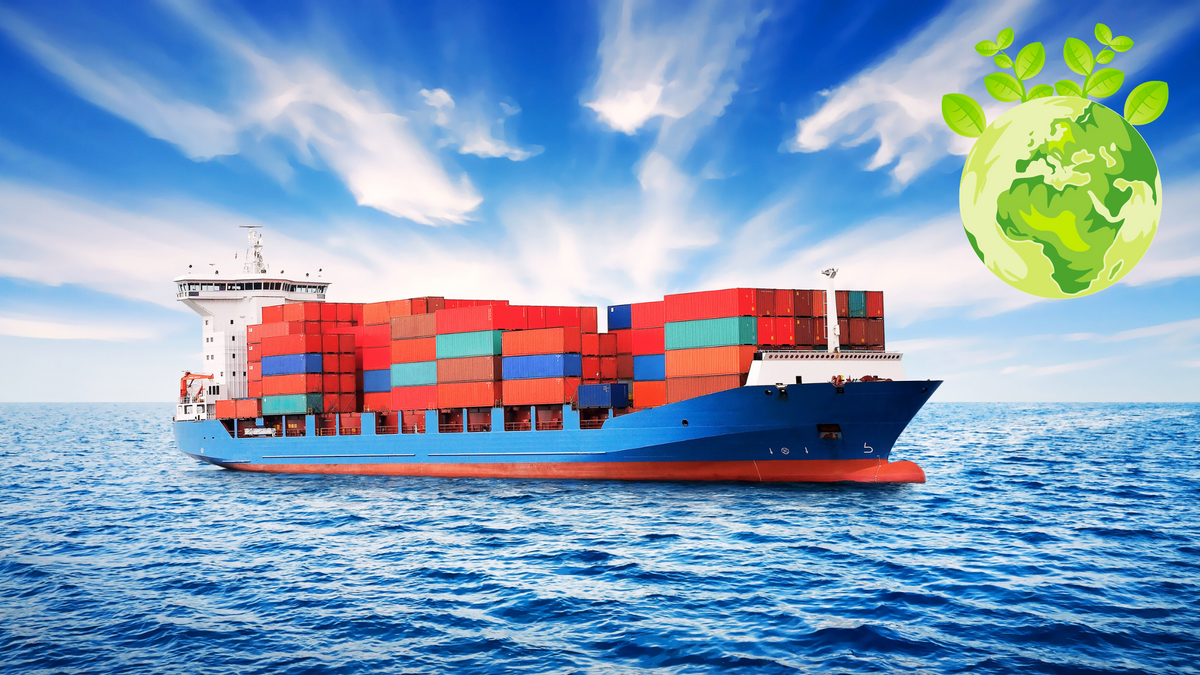Sustainable Shipping: Promoting Environmentally Friendly Practices

In today's interconnected world, the shipping industry plays a critical role in facilitating global trade and ensuring the movement of goods across continents. However, the environmental impact of traditional shipping practices has raised concerns about sustainability. The industry's carbon dioxide emissions, air and water pollution, and habitat destruction call for urgent action. To address these challenges, sustainable shipping has emerged as a necessary approach to promote environmentally friendly practices within the industry. This blog delves deeper into the importance of sustainable shipping and explores key initiatives aimed at reducing its ecological footprint, supported by case studies that highlight successful implementations.
The Environmental Impact of Shipping
The shipping industry has a considerable impact on the environment, primarily through greenhouse gas emissions and pollution. It is estimated that shipping accounts for around 2-3% of global carbon dioxide emissions. These emissions contribute significantly to climate change, affecting weather patterns, sea levels, and the overall stability of ecosystems. Furthermore, ships release pollutants such as sulfur dioxide (SO2), nitrogen oxides (NOx), and particulate matter (PM), which contribute to air pollution and have detrimental effects on human health and marine life.
Case Study: The Maersk Triple-E Class Container Ships Maersk, one of the world's largest shipping companies, developed the Triple-E class container ships, which are known for their energy efficiency. These ships incorporate advanced design features such as optimized hull design, highly efficient engines, and waste heat recovery systems. By reducing energy consumption and emissions per container transported, the Triple-E class ships have set new standards for sustainable shipping practices.

The Need for Sustainable Shipping
The urgency to adopt sustainable shipping practices arises from the realization that the industry's impact on the environment is not sustainable in the long run. Sustainable shipping aims to balance economic viability with environmental responsibility. By embracing sustainable practices, the shipping industry can contribute to global efforts to combat climate change, preserve marine ecosystems, and protect human health.
Case Study: The International Maritime Organization's (IMO) Energy Efficiency Design Index (EEDI) The IMO has established the Energy Efficiency Design Index (EEDI) as a mandatory measure for new ships. The EEDI sets specific energy efficiency requirements that new ships must meet, encouraging the industry to design and construct vessels with reduced greenhouse gas emissions. This initiative has driven technological advancements and led to the development of more energy-efficient ships.
Read more here
Promoting Energy Efficiency
Improving energy efficiency is a crucial aspect of sustainable shipping. Ships can adopt various measures to reduce fuel consumption and emissions, contributing to a greener industry.
Case Study: Slow Steaming Practices Slow steaming refers to the practice of reducing ship speed to achieve fuel savings. By operating ships at slower speeds, fuel consumption and emissions can be significantly reduced. Maersk Line implemented slow steaming practices across its fleet, reducing fuel consumption by up to 30% per container transported. This approach not only reduces greenhouse gas emissions but also leads to cost savings for shipping companies.
More here
Alternative Fuels and Renewable Energy Sources
To achieve sustainable shipping, the industry must explore and adopt alternative fuels and renewable energy sources, reducing its dependence on traditional fossil fuels.
Case Study: The Methanol-powered Containership, "Mette Maersk" Maersk Line collaborated with partners to develop the "Mette Maersk," a container ship powered by methanol. Methanol is a cleaner-burning fuel with significantly lower emissions compared to traditional fuels. The "Mette Maersk" successfully demonstrated the feasibility of using methanol as a sustainable alternative in the shipping industry, showcasing the potential for reducing carbon emissions.
More here
Ballast Water Management
The discharge of ballast water, which is taken on board to maintain ship stability, has been a significant source of ecological disruption. Effective ballast water management is crucial to prevent the transfer of harmful organisms.
Case Study: UV Treatment Systems for Ballast Water Management Ecochlor developed a ballast water management system that uses UV treatment to eliminate harmful organisms in ballast water. This system has been adopted by various shipping companies and has proven to be effective in preventing the introduction of invasive species. The UV treatment approach offers a sustainable and chemical-free solution to ballast water management.

Port Infrastructure and Waste Management
Ports play a crucial role in sustainable shipping practices. Implementing environmentally friendly port infrastructure and waste management practices can significantly reduce pollution and promote sustainability.
Case Study: The Port of Los Angeles Shore Power Program The Port of Los Angeles implemented a shore power program, providing electrical power to ships while at berth. This initiative allows ships to turn off their engines and rely on onshore electrical power, leading to a significant reduction in emissions and noise pollution. The program has been successful in improving air quality and promoting sustainable practices in the shipping industry.

The shipping industry bears a significant responsibility to embrace sustainable practices and reduce its environmental impact. By prioritizing energy efficiency, exploring alternative fuels and renewable energy sources, implementing effective ballast water management, and improving port infrastructure and waste management, sustainable shipping can become a reality.
Through collaborative efforts between governments, shipping companies, and international organizations, the industry can transition towards a greener and more sustainable future. By promoting environmentally friendly practices, we can ensure the preservation of our planet's delicate ecosystems while facilitating global trade.


